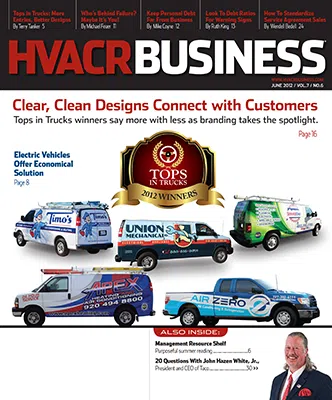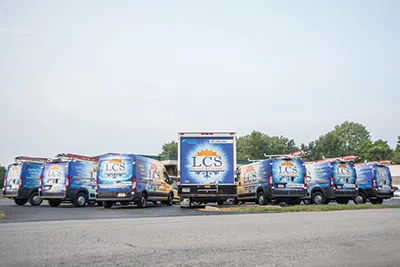How to set up a vehicle-stocking-and-organization program.
Pine State Services, South Portland, Maine, began its program about six months ago for its fleet of 21 vehicles, 10 of which are service vehicles. Pine State Services provides services in plumbing, gas heat, oil heat, air conditioning, refrigeration, and sewer and drain cleaning.
Why did they do it?
“Our guys were ill-prepared when in the field,” explains president Sam Marcisso. “We had too many runners bringing them supplies. It was wasting time.”
Since the program began, Pine State Services has:
- Gone from three parts runners to one.
- Sold off excess inventory.
- Is using less fuel.
- Is keeping only two days worth of inventory on hand.
“The truck space is a lot cleaner, and all of the trucks are stocked the same way,” Marcisso says, noting that this helps to achieve consistent service and more flexibility in staffing.
Here’s how the program works:
- The trucks are pre-stocked with 80% of what is regularly needed for service calls. (The other 20% is provided as needed by runners.)
- The technician is given a materials checklist on a clipboard at the start of the shift. At the end of the shift, he checks off what was used, and turns in the list with his invoices.
Marcisso said the first step the company took was to pretend to stock a truck using a “mock” space on the warehouse floor.
Doing this first — before actually stocking a truck — allowed the staff to determine exactly how much would fit, what was most important to be included, and how it would all fit together. Once the model was finalized, the company began investing between $1,000 to $2,000 per vehicle in racks, bins, and other storage devices to organize and hold parts, materials, machinery, and tools.
They outfitted one truck a month with about $7,000 worth of inventory. (Marcisso suggests starting with the best technician to build enthusiasm and momentum and to learn best practices as you go along.) And what do the service techs think of this new system?
“They love it,” Marcisso says. “It is so much more efficient. There’s nothing worse than being on the job, and not having the part you need. It’s frustrating and embarrassing.”
Tonya Vinas is a former editor of HVACR Business.


